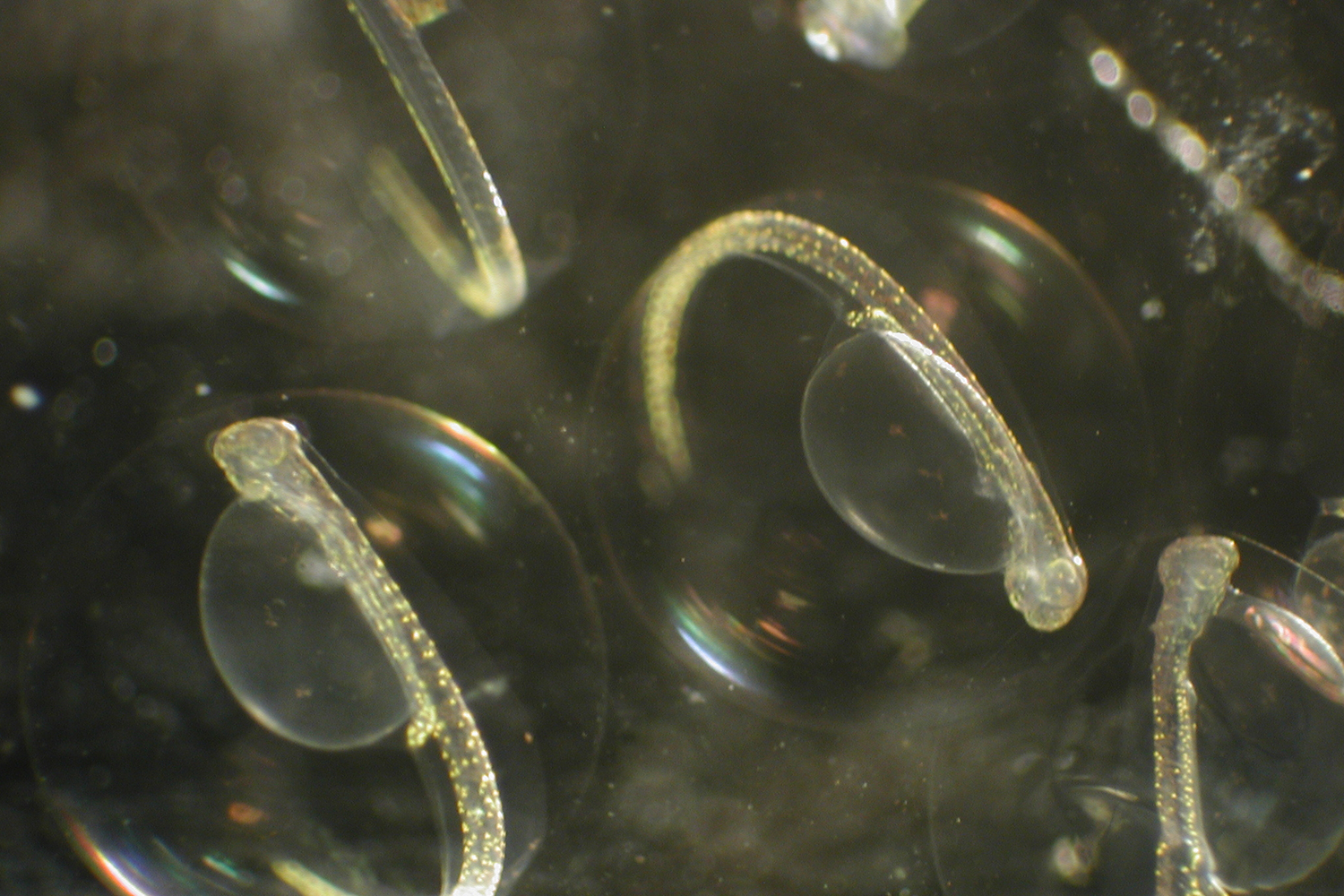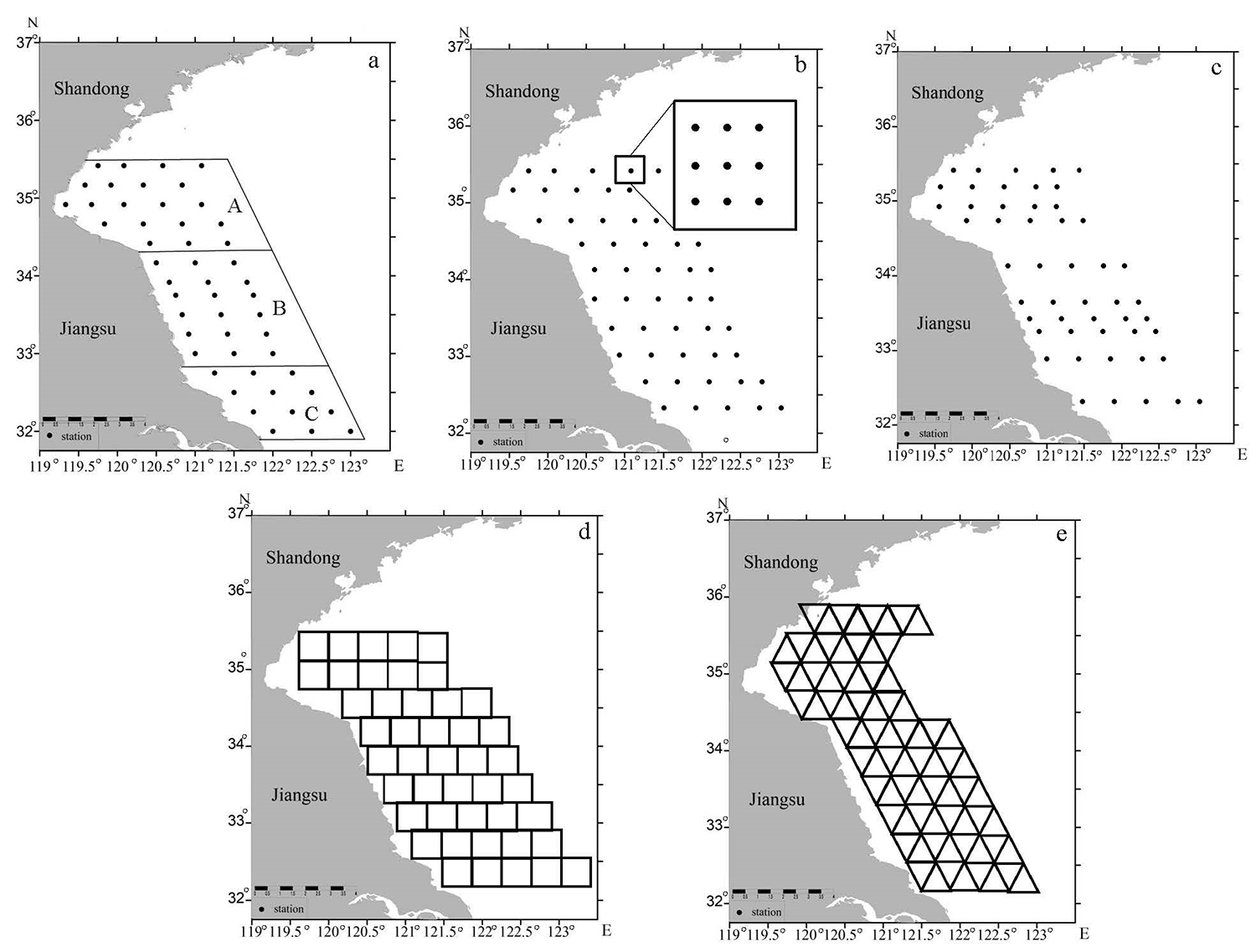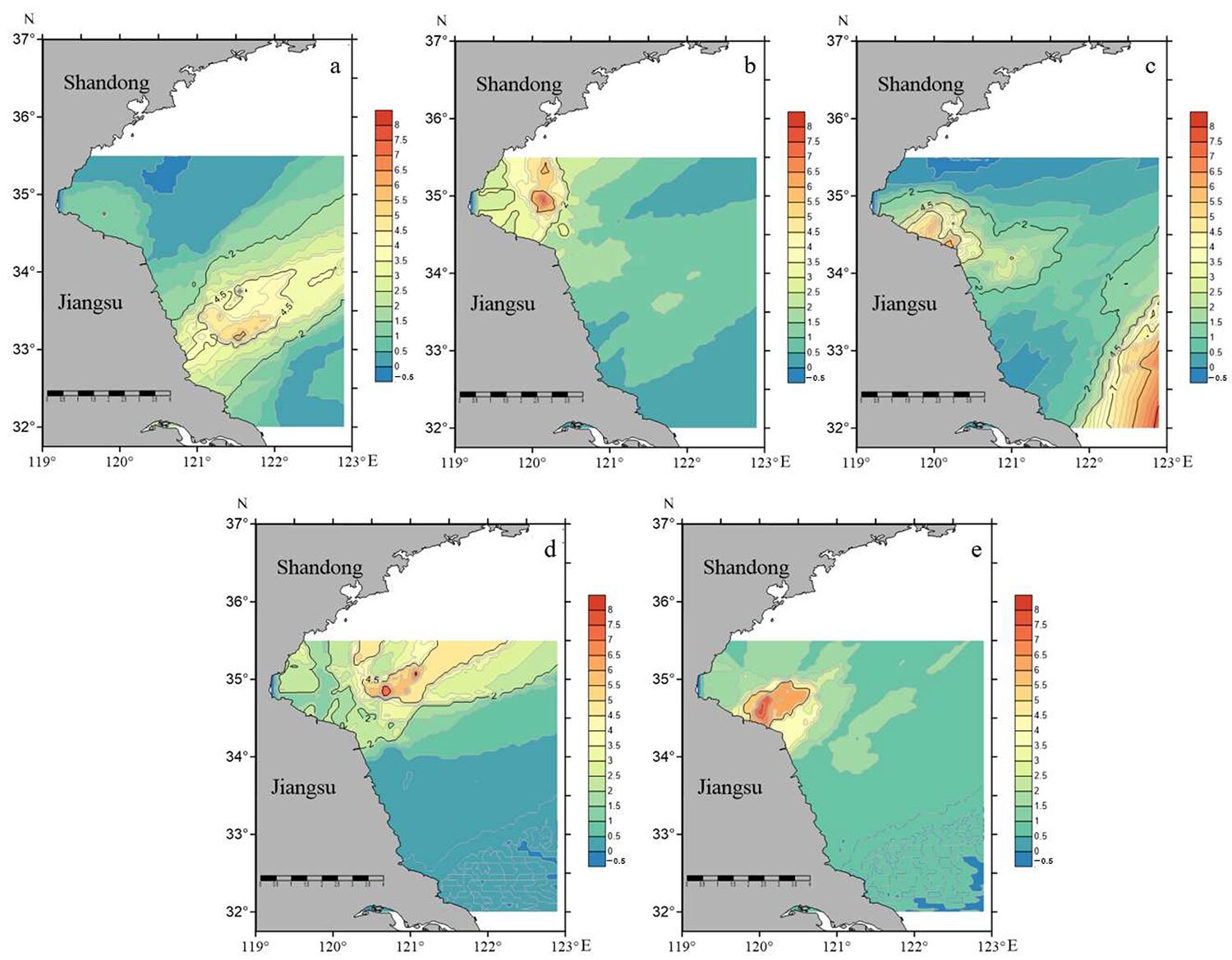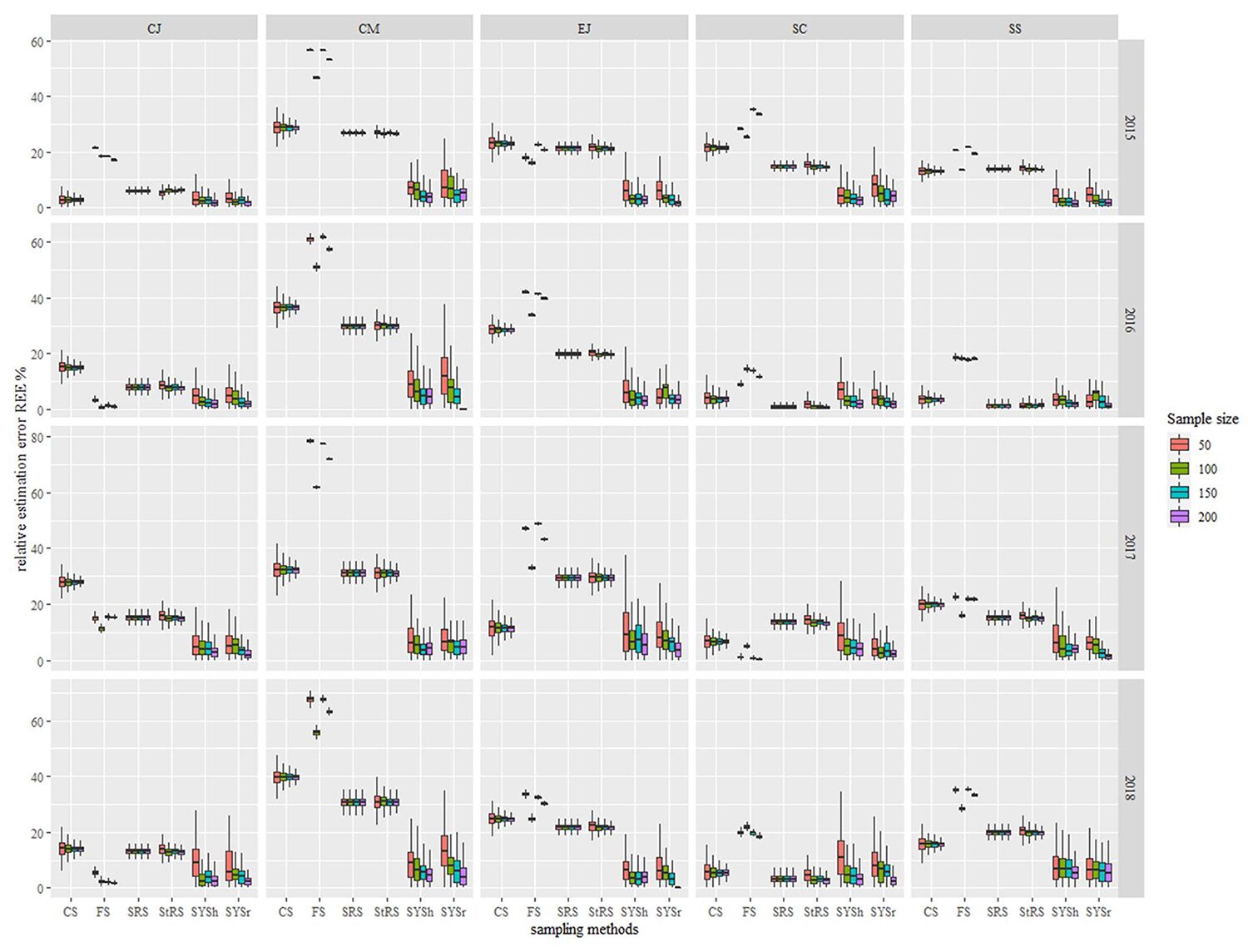Systematic sampling designs have high estimation precision and accuracy and can estimate population abundances of several ichthyoplankton species

Fishery-independent surveys are essential in collecting data for assessment of fish population characteristics like abundance and spatial distribution. A properly designed fishery-independent survey can provide accurate information about population dynamics, which can be further used to make decisions for fishery management and the sustainable utilization of fishery resources. With the increasing demand for high-quality data for fish stock assessment and management, sampling design and its optimization have attracted much attention.
Ichthyoplankton refers to the early life history stage of fishes, including eggs, larvae and juveniles. Ichthyoplankton monitoring programs are often conducted to collect information on the species composition, abundance, and geographical distribution of ichthyoplankton. The distribution patterns of ichthyoplankton influence their growth and survival rate, and habitat preference can lead to different spatiotemporal patterns. Many factors, such as environmental changes and human disturbances, may affect the traditional spawning environments of fish stocks, leading to changes in the spawning ground, abundance and spatial distribution patterns of ichthyoplankton species over time.
A well-designed sampling program is fundamental to high-quality data collection in ichthyoplankton surveys. Considering the various survey objectives, the accuracy and precision of estimation, and the cost saving, ichthyoplankton survey design has gradually attracted much attention. The influences of sampling designs on the estimation of different characteristics of ichthyoplankton communities and the effectiveness of the survey designs need to be evaluated.
Fishery-independent surveys are often expensive, and sampling procedures at sea are also often constrained by ocean conditions. This requires an evaluation of alternative sampling designs to select a cost-effective scheme, which can allow us to obtain high-quality data with limited cost.
This article – summarized from the original publication [Ma, Y. et al. 2025. Effects of Sampling Design on Population Abundance Estimation of Ichthyoplankton in Coastal Waters. Fishes 2025, 10(2), 39] – presents the results of a study that evaluated the performances of different sampling designs to find the optimal sampling design to improve the accuracy and precision of estimates of abundance indices for numerous ichthyoplankton species in the ichthyoplankton survey.
Study setup
A study was conducted by the Ocean University of China (Qingdao, China) to evaluate the performance and consistency of six potential sampling designs for an ichthyoplankton survey in the coastal waters of the central and southern Yellow Sea. These waters are important spawning, feeding and nursery grounds for many fish species, and they are also traditional fishing grounds in China. Relative estimation error (REE) and relative bias (RB) were used to measure the performances in estimating the population abundances of five target ichthyoplankton species (red tonguesole, dragonet, Japanese anchovy, silver sillago and Commerson’s anchovy) for different sampling designs.
Simple random sampling (SRS), stratified random sampling (StRS), fixed-station sampling (FS), cluster sampling (CS), and systematic sampling (SYS) are commonly used sampling designs in fishery-independent surveys. SRS is the simplest sampling design, and other complex sampling designs usually include SRS to some extent. StRS divides the population into different strata according to heterogeneities and conducts SRS at each stratum to improve the precision and accuracy of the estimation of population abundance.
Creatures great and small: Study says warming Arctic Ocean a threat to zooplankton, right whales
FS is a repeated sampling at fixed stations, which can find different information at the same sampling station to compare the changes in resources over time. CS has a long history in ecology studies, and it is often adopted when environmental gradients are closely related to species distribution. SYS is accurate when the target species is evenly and widely distributed. The effects of sampling designs on the estimation of different survey objectives have been examined in many studies.
For detailed information on the experimental sampling designs and equipment, data collection and analyses, refer to the original publication.

Results and discussion
This study showed that the two systematic sampling designs had better performances for estimating the abundance indices of multiple ichthyoplankton species compared with the other four sampling designs in terms of relative estimation error and relative bias in the ichthyoplankton survey. The results of the good performances of the systematic sampling designs were consistent with conclusions that were obtained in estuarine and benthic communities to estimate the population abundance index under different sampling designs.
Previous studies have suggested that SYS might underestimate the population density. However, SYS showed unbiased estimates of abundance indices of ichthyoplankton species in this study. This may be due to the relatively high spatial coverage of sampling stations in SYS. In the case of ichthyoplankton, SYS can better cover the survey area, thus obtaining more data information. The performances in estimating abundance indices of ichthyoplankton species were similar for the two systematic sampling designs.

As for StRS and SRS, their performances in estimating abundance indices of ichthyoplankton species were relatively similar. In general, StRS performed better than SRS because it considered the low heterogeneity within strata and the high heterogeneity between strata. This study showed that StRS performed better than SRS in most cases, indicating that stratification was in line with the spatial distribution characteristics of target ichthyoplankton species in the study area to a certain extent, which was consistent with conclusions in previous studies.
Many studies have proposed developing adaptive sampling designs on the basis of CS to balance sampling errors. Currently, most studies on ichthyoplankton are based on the data collected by the fixed-station sampling design. But our study showed that the fixed-station sampling design was likely to make the estimation of ichthyoplankton abundance less accurate.
Therefore, it is necessary to evaluate the performances of current ichthyoplankton sampling program design and determine the optimal survey sampling design, so that higher-quality data can be obtained to conduct subsequent analysis.

Larvae abundance is a relative index of spawning stock biomass, which can be used to monitor the population dynamics of fish species and can provide basic information for the designation of protected areas and fisheries management. When faced with multiple survey objectives, the optimal sampling designs are often different for different sampling objectives. For the long-term fishery-independent survey, especially for ichthyoplankton, which is passively transported, the performance of survey design needs to be continuously evaluated and re-examined to ensure the accuracy of the survey data due to the possible changes in spatial distribution caused by environmental change and changes in the adaptability of the fish themselves [63].
The defined strata in StRS referred to the spatial structure of the ichthyoplankton community in the coastal waters of the central and southern Yellow Sea in this study. However, the spatial distribution of species abundance might be different from the spatial pattern at community level. This may explain why StRS did not perform better than SRS in estimating abundance indices of target fish populations on some occasions. Many studies indicated that it was necessary to adjust the strata to obtain the optimal stratification design when aiming at different sampling objectives. The effect of stratification scheme on the estimation of abundance indices of target ichthyoplankton species should be further examined in future studies.
This research used the abundance indices of ichthyoplankton species as the sampling objective to evaluate the performances of different sampling designs. SYS is the most suitable sampling method for the ichthyoplankton survey program. The study provided a framework to determine a reasonable sampling design for estimating the abundance indices of target ichthyoplankton species in the ichthyoplankton survey.
Perspectives
This study explored the effects of different sampling designs on the population abundance estimation of ichthyoplankton in the coastal waters. The two systematic sampling designs were better than the other four traditional sampling designs in estimating the abundance of different ichthyoplankton species. This suggests that the sampling design that evenly covers the entire sea area, including both the high- and low-value areas of the species distribution, is optimal when estimating ichthyoplankton species abundance in an ichthyoplankton sampling program. These findings can be used to propose a method with higher precision and accuracy for ichthyoplankton surveys and to reduce the survey cost in case of being able to obtain accurate data, as well as to provide a sampling program reference for further ichthyoplankton surveys.
Now that you've reached the end of the article ...
… please consider supporting GSA’s mission to advance responsible seafood practices through education, advocacy and third-party assurances. The Advocate aims to document the evolution of responsible seafood practices and share the expansive knowledge of our vast network of contributors.
By becoming a Global Seafood Alliance member, you’re ensuring that all of the pre-competitive work we do through member benefits, resources and events can continue. Individual membership costs just $50 a year.
Not a GSA member? Join us.
Authors
-
Yihong Ma
College of Fisheries, Ocean University of China, Qingdao 266003, China
-
Chongliang Zhang
College of Fisheries, Ocean University of China, Qingdao 266003, China
-
Ying Xue
College of Fisheries, Ocean University of China, Qingdao 266003, China
-
Yupeng Li
College of Fisheries, Ocean University of China, Qingdao 266003, China
-
Yiping Ren
College of Fisheries, Ocean University of China, Qingdao 266003, China
-
Binduo Xu
Corresponding author
College of Fisheries, Ocean University of China, Qingdao 266003, China



